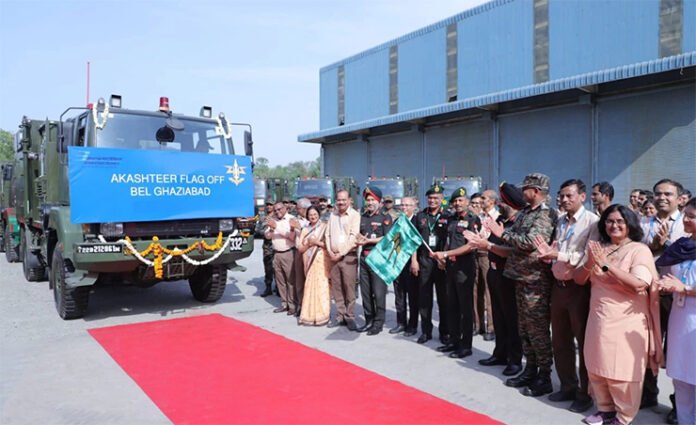New Delhi: With the acquisition of 100 Akashteer air defence systems, the Indian Army has significantly enhanced its air defence capabilities. These advanced Air Defence Control and Reporting Systems (ADCRS), developed by Bharat Electronics Limited (BEL), will serve as a critical asset in safeguarding the country from aerial threats, including missile and rocket attacks. The successful delivery of these systems underscores India’s commitment to bolstering its military’s self-reliance and modernising its defence infrastructure.
In March 2023, the Ministry of Defence contracted BEL for their production. The contract, worth nearly Rs 2,000 crore, was part of India’s broader push towards indigenisation and enhancing the country’s defence capabilities. In March 2024, BEL delivered the first Akashteer system to the Indian Army. By September 30, 2024, all 100 units had been successfully handed over, meeting the Army’s critical operational timelines.
Reaffirming BEL’s position as a key player in India’s defence manufacturing sector, the rapid deployment reflects BEL’s strategic ability to deliver crucial defence systems on time, in collaboration with the Indian Army’s Army Air Defence (AAD) corps.
More than just an air defence system— Akashteer is a sophisticated, integrated control and reporting system designed to neutralise enemy threats swiftly. The system is capable of managing all aspects of air defence for the Army, integrating multiple radar systems, sensors, and communication technologies into a single operational framework.
By providing a real-time battlefield view, the Akashteer system allows military personnel to detect, track, and engage aerial threats such as incoming missiles or enemy aircraft. It brings together various surveillance assets, radar systems, and communication nodes, enabling precise coordination of air defence operations. This enhances the Indian Army’s ability to monitor airspace and deliver timely responses to any imminent threats. The system’s versatility makes it suitable for a wide range of operational environments. Whether deployed along contested borders or in strategic urban areas, Akashteer strengthens the Army’s capability to protect key assets and infrastructure from aerial attacks.
In the context of evolving global threats, the integration of 100 Akashteer systems into the Indian Army’s defence architecture is critical. The recent missile attacks in regions like Israel highlight the importance of having robust air defence systems capable of responding to advanced and high-speed missile threats. In this regard, Akashteer offers India the ability to monitor and respond to such attacks in real-time, reducing the risk of damage to strategic assets and military installations.
With the successful induction of Akashteer, the Indian Army has further fortified its defence against missile and rocket attacks, making it better equipped to handle potential conflicts or hostile incursions. This acquisition comes at a time when regional security concerns, including tensions with neighbouring countries, have underscored the need for India to upgrade its defence systems.
The manufacturer of Akashteer, Bharat Electronics Limited has been a leader in indigenous defence technologies. Its expertise in building complex, integrated systems has allowed India to develop advanced capabilities independently, keeping pace with global technological advancements in defence.
Raksha Anirveda's editorial desk team brings in the collective experience of creative professionals - a fine mix of senior copy editors, writers, proofreaders and designers. Working as a team, they continuously create, manage, and curate content to sustain the magazine's profile and reputation in line with market trends and achieve magazine's goal.





